Folk Revival
Acoustic, political, traditional music revival.
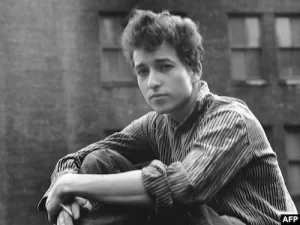
Bob Dylan
Bob Dylan played a pivotal role in shaping the Folk Revival of the 1960s. Drawing from traditional folk, blues, and protest songs, he infused the genre with poetic lyrics and powerful social commentary. Songs like “Blowin’ in the Wind” and “The Times They Are A-Changin’” became anthems for civil rights and anti-war movements, inspiring a generation to view music as a tool for change. Dylan’s ability to blend personal introspection with political themes set a new standard for songwriting. He also pushed boundaries by going electric in 1965, merging folk with rock and expanding the genre’s reach. Dylan’s impact made folk music more relevant, dynamic, and influential in American culture.
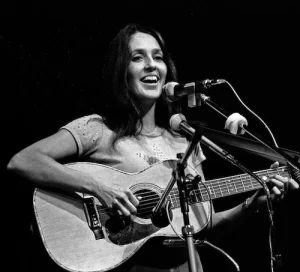
Joan Baez
Joan Baez was a key figure in the 1960s Folk Revival, known for her clear soprano voice and commitment to social justice. She brought traditional folk songs to mainstream audiences and used her platform to highlight issues like civil rights, nonviolence, and anti-war activism. Baez introduced Bob Dylan to wider audiences by performing his songs early in his career, helping to elevate his influence. Her performances at events like the Newport Folk Festival and the 1963 March on Washington made folk music a voice for change. With her blend of musical talent and activism, Baez helped define folk as a genre rooted in both tradition and social conscience, inspiring generations of musicians and activists alike.
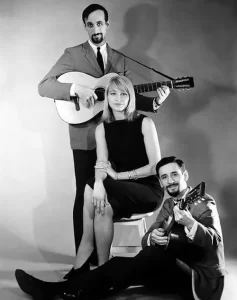
Peter, Paul and Mary
Peter, Paul and Mary were instrumental in popularizing Folk Revival music during the 1960s. With their smooth harmonies and polished style, they brought folk music to a broader, mainstream audience. Their recordings of songs like “If I Had a Hammer,” “Where Have All the Flowers Gone,” and “Blowin’ in the Wind” (written by Bob Dylan) became anthems for peace, civil rights, and social justice. The trio’s ability to blend meaningful messages with accessible melodies helped make folk music a unifying force during a time of social change. They also helped bridge the gap between traditional folk and contemporary issues, proving that music could both entertain and inspire. Their influence remains a cornerstone of American folk history.
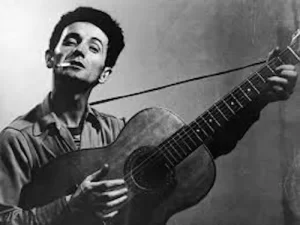
Woody Guthrie
Woody Guthrie was a foundational figure in the Folk Revival movement, known for his simple melodies and powerful lyrics that spoke to the struggles of everyday Americans. His most famous song, “This Land Is Your Land,” became an unofficial anthem of the people, celebrating unity and social justice. Guthrie’s music often addressed themes of poverty, workers’ rights, and political activism, inspiring future generations of folk artists, including Bob Dylan. He believed music could be a tool for change and gave voice to those who were often unheard. With his guitar bearing the phrase “This machine kills fascists,” Guthrie set the tone for folk as a genre of protest, storytelling, and hope during challenging times in American history.
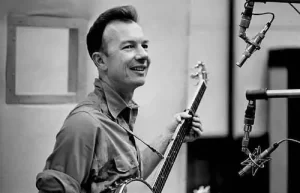
Pete Seeger
Pete Seeger was a driving force behind the Folk Revival movement, using his music to promote social justice, peace, and environmental causes. A gifted banjo player and songwriter, Seeger helped preserve traditional folk songs while also creating new ones with powerful messages, such as “If I Had a Hammer” and “Where Have All the Flowers Gone.” He believed in the power of community singing, often encouraging audience participation at his concerts. Seeger inspired countless artists, including Bob Dylan and Joan Baez, and brought folk music to civil rights marches, anti-war rallies, and labor protests. His blend of activism and artistry helped shape folk as a voice for the people, making it a vital part of American cultural and political life.
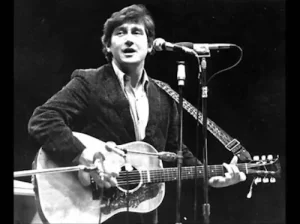
Phil Ochs
Phil Ochs was a powerful voice in the Folk Revival movement, known for his sharp, satirical songs that tackled political and social issues of the 1960s. Unlike many of his peers, Ochs focused almost entirely on protest music, writing about civil rights, war, labor struggles, and government corruption. Songs like “I Ain’t Marching Anymore” and “Draft Dodger Rag” captured the frustration of a generation disillusioned with authority. His clear, passionate voice and commitment to activism made him a standout figure in folk music. While he never achieved the commercial success of some contemporaries, Ochs’ uncompromising stance and lyrical brilliance left a lasting impact, influencing protest music and helping define folk as a powerful force for truth and justice.
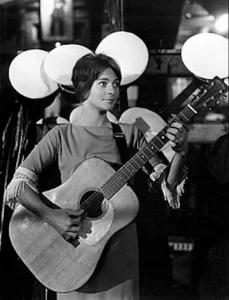
Judy Collins
Judy Collins played a key role in the Folk Revival movement with her angelic voice, interpretive skill, and eclectic song choices. She introduced audiences to a wide range of material, from traditional folk tunes to contemporary songs by emerging artists like Bob Dylan, Leonard Cohen, and Joni Mitchell. Collins helped elevate folk music by blending it with elements of classical, pop, and rock, expanding its appeal beyond traditional circles. Her hit recordings, such as “Both Sides Now” and “Suzanne,” showcased her talent for emotional storytelling through song. Collins also used her platform to support social causes, including civil rights and anti-war efforts. Her artistry and advocacy helped shape folk music into a more inclusive and expressive genre.
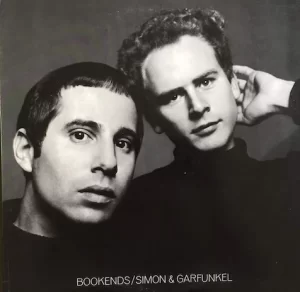
Simon & Garfunkel
Simon and Garfunkel significantly influenced the Folk Revival by blending poetic lyrics with rich harmonies and contemporary themes. Their music combined folk traditions with pop sensibilities, making the genre more accessible to mainstream audiences. Songs like “The Sound of Silence,” “America,” and “Bridge Over Troubled Water” addressed personal introspection, societal unrest, and the American experience during the 1960s. Paul Simon’s songwriting brought depth and sophistication to folk music, while Art Garfunkel’s clear, expressive vocals added emotional resonance. Their success on the charts helped bring folk-inspired music to a wider audience, especially younger listeners. By merging folk roots with modern production, Simon and Garfunkel helped evolve the genre, leaving a lasting mark on American music history.
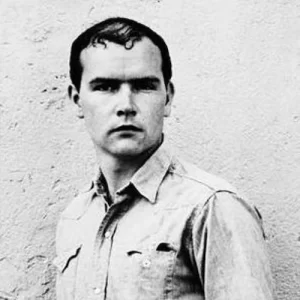
Tom Paxton
Tom Paxton was a vital voice in the Folk Revival movement, known for his thoughtful songwriting and commitment to social causes. He wrote songs that combined storytelling, humor, and political insight, making complex issues relatable through music. Classics like “The Last Thing on My Mind” and “Ramblin’ Boy” became staples of the folk repertoire and were covered by many major artists. Paxton’s work addressed civil rights, war, and everyday life with sincerity and clarity. He believed in the power of song to educate and inspire, often performing at rallies and protests. Unlike some peers, Paxton consistently focused on songwriting rather than fame, helping to shape folk music as a meaningful, accessible, and enduring form of expression.
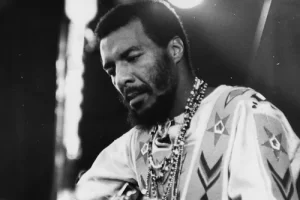
Richie Havens
Richie Havens brought a unique voice and energy to the Folk Revival movement with his soulful style, rhythmic guitar playing, and heartfelt performances. Blending folk, blues, and gospel influences, he stood out for his passionate delivery and improvisational flair. Havens rose to national prominence with his powerful opening performance at Woodstock in 1969, where his impromptu song “Freedom” became an iconic moment of the era. He often used music to promote messages of peace, unity, and social justice. Havens also covered songs by Bob Dylan and The Beatles, infusing them with new emotion and meaning. His distinctive sound and commitment to truth and humanity helped broaden the reach and impact of folk music during a time of great change.